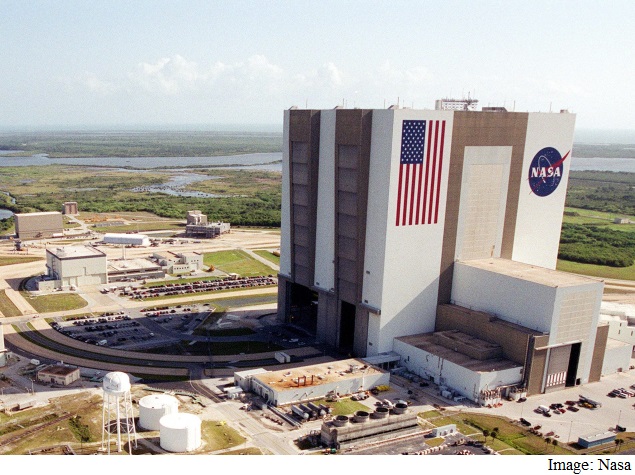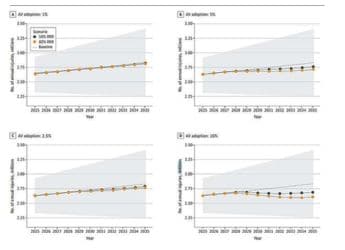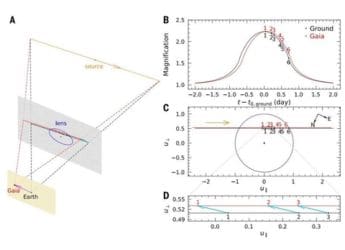- Home
- Science
- Science News
- Nasa Mission to Measure Earth's Magnetic Collisions
Nasa Mission to Measure Earth's Magnetic Collisions

"The first step is to figure out what the heck is going on," John Dorelli, a space scientist at Nasa's Goddard Space Flight Center, said in an interview.
The protective bubble of the Earth's magnetic field typically deflects high-speed particles from the sun. But an onslaught of particles from a solar explosion can pop the outer layers of the bubble. "Right where the solar wind meets the magnetosphere, that boundary, you have a weak point in the magnetic field," Dorelli said.
The details of the popping, known as magnetic reconnection, remain mysterious. (The same process, on a much larger scale, generates the solar explosions known as coronal mass ejections.)
Charged particles in the solar wind, mostly electrons and protons traveling at about 1 million mph, generate a magnetic field as they move. If the direction of the field is opposite to that of Earth's field, the magnetic fields realign and partly merge as they near one another. That is similar to what happens when two bar magnets attract each other - the north pole of one is pulled toward the south pole of the other. In space, the realignment releases energy that accelerates and heats the cloud of charged particles, which scientists call plasma.
"It's sort of like pounding down on a tube of toothpaste," Dorelli said. "That thing just collapses very rapidly, and it squeezes the plasma out very rapidly."
When a giant solar explosion arrives at Earth, the squeezed particles race around the planet to the tail of the magnetic bubble over the night side. That sets off more magnetic reconnections, shooting particles back at Earth that induce electrical currents in the ground. The currents can flow into electrical transmission lines, potentially overloading transformers and causing continentwide blackouts.
The equations describing magnetic reconnection can be written simply but not solved. Even the biggest, fastest computers cannot establish what is going on. Thus, scientists are looking to the $1.1 billion Nasa mission to provide measurements to guide them.
"We're trying to find those hot spots out in space," Roy B. Torbert, deputy principal investigator for the mission, said at a news conference Wednesday at Kennedy Space Center in Florida. "We do not understand at all what causes the dissipation in plasmas."
During the two-year mission, four identical octagonal spacecraft, each weighing as much as a compact car, are to fly in a pyramid formation that will let them obtain three-dimensional pictures of the magnetic fields and plasma. The deluge of data could help scientists better predict the timing and effects of solar storms.
The spacecraft are stacked on top of an Atlas 5 rocket at Cape Canaveral Air Force Station in Florida.
The 30-minute launch window starts Thursday at 10:44 p.m., Eastern. Forecasts call for a 70 percent chance of conditions favorable for launching.
© 2015 New York Times News Service
Catch the latest from the Consumer Electronics Show on Gadgets 360, at our CES 2026 hub.
Related Stories
- Samsung Galaxy Unpacked 2025
- ChatGPT
- Redmi Note 14 Pro+
- iPhone 16
- Apple Vision Pro
- Oneplus 12
- OnePlus Nord CE 3 Lite 5G
- iPhone 13
- Xiaomi 14 Pro
- Oppo Find N3
- Tecno Spark Go (2023)
- Realme V30
- Best Phones Under 25000
- Samsung Galaxy S24 Series
- Cryptocurrency
- iQoo 12
- Samsung Galaxy S24 Ultra
- Giottus
- Samsung Galaxy Z Flip 5
- Apple 'Scary Fast'
- Housefull 5
- GoPro Hero 12 Black Review
- Invincible Season 2
- JioGlass
- HD Ready TV
- Laptop Under 50000
- Smartwatch Under 10000
- Latest Mobile Phones
- Compare Phones
- Vivo Y50e 5G
- Vivo Y50s 5G
- Realme 16 Pro+ 5G
- Realme 16 Pro 5G
- TCL Nxtpaper 70 Pro
- OPPO A6 Pro 5G
- Honor Power 2
- OPPO A6s
- Zephyrus Duo 16 (2026)
- Asus ROG Zephyrus G16 (2026)
- Realme Pad 3
- OPPO Pad Air 5
- Xiaomi Watch 5
- Huawei Watch 10th Anniversary Edition
- Acerpure Nitro Z Series 100-inch QLED TV
- Samsung 43 Inch LED Ultra HD (4K) Smart TV (UA43UE81AFULXL)
- Asus ROG Ally
- Nintendo Switch Lite
- Haier 1.6 Ton 5 Star Inverter Split AC (HSU19G-MZAID5BN-INV)
- Haier 1.6 Ton 5 Star Inverter Split AC (HSU19G-MZAIM5BN-INV)

















